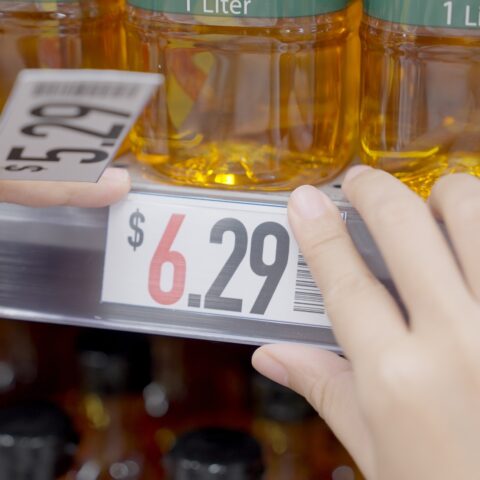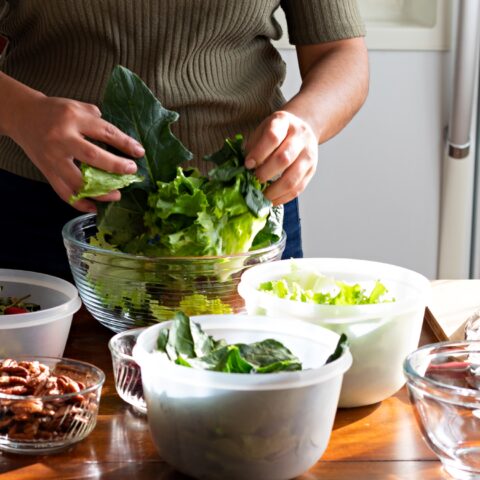How to Read Sell-by Dates and Best-by Dates

We’ve all probably done it at one time or another: We find a food product that has been hiding in the back of the refrigerator or pantry for longer than we can remember. We’re not sure when it was purchased, so we turn to the sell-by date to determine whether it should be thrown out.
Though sell-by dates and other food date labels (e.g., “best by,” “use by”) are helpful in gauging the freshness of a product, they’re not meant to be used as expiration dates, and this misconception can lead to a lot of food waste.
To combat unnecessary food waste, the state of California is set to ban sell-by dates on packaged foods by July 1, 2026, which may see ripple effects across the United States. Here’s what that means for consumers and how to tell if food is past its prime or still edible.
What Do Sell-by Dates Really Mean?
In the United States, sell-by dates and other food date labels are mostly unregulated by federal law. There’s no federal requirement to have sell-by dates on most foods. The dates are voluntarily set by manufacturers to reflect whether the item is still at ideal taste, texture, nutrients, and overall quality.
Sell-by dates are there to help stores manage their inventory. That way, the items are rotated and sold while still fresh. Contrary to popular belief, food past its sell-by date isn’t necessarily spoiled or unsafe. This date ensures consumers have a reasonable amount of time to use the product before its quality declines.
Perishables like meat and seafood typically have shorter sell-by dates because their quality declines faster than shelf-stable or processed foods. These foods will generally have “freeze-by” or “use-by” dates. [1]
Food Date Labels Explained
Neither the sell-by date nor the best-by date is about food spoilage. [2]
- Sell-by dates are intended for retailers. They indicate the last day the product should be sold to ensure maximum quality for the consumer. After the sell-by date, the product might still be safe to eat for a week or two, but its quality may decline. This date helps retailers manage their stock and rotate items efficiently.
- Best-by dates are meant for consumers. They suggest the date by which the product will have the best flavor, texture, and quality. It’s not a strict expiration date; it’s a guide to ensure optimal taste and freshness. Food is often safe to consume after this date, though its quality may gradually decrease.
- Best if used by is what the state of California will switch to in July 2026. This date will signal to consumers when the food is still at peak quality—not spoiled—helping to reduce food waste.
- Use by will be used in California to indicate product safety, which follows the recommendations of federal agencies.
How to Determine When Produce and Other Foods Are Still Edible
Both sell-by and best-by dates are about quality rather than safety. The spoilage of any given food can vary depending on how it’s stored and handled. If a food looks, smells, and tastes fine, it may still be good even after these dates have passed. So, you don’t necessarily have to rely on package dates. Here are a few helpful tips to determine whether foods are still fresh:
- Fresh Produce: Look for a vibrant color. Wilted, dull, or slimy textures indicate spoilage. Rotting produce often has an off-putting, sour, or overly sweet smell. Mold usually appears as green, blue, white, or fuzzy spots.
- Leafy Greens: Check for sliminess, especially on the edges. Wilted, dull, or mushy textures indicate spoilage. The leaves should look fresh and perky.
- Meat: Fresh meat is typically pink or red, and poultry is pinkish. It should have little to no smell. If it turns gray, green, or develops an iridescent sheen, it’s time to discard it. Spoiled meat also emits a strong, rancid, or sour smell.
- Fish: Fresh fish should be shiny and have clear, bulging eyes. Dull or milky flesh indicates spoilage.
- Eggs: Fresh eggs sink to the bottom of a bowl of water, while older eggs stand upright or float. A spoiled egg will have a sulfur-like, rotten smell when cracked open.
- Canned Foods: If a canned or packaged food makes a fizzing or popping sound when opened, it’s a sign of bacterial growth and should be discarded. It’s also good practice to throw out cans that have large dents or bulges.
- Condiments: Check jars of sauces or condiments for a crust or an unusual color around the lid, especially if they’ve been open for a while. It’s a sign they’re past their prime.
An excellent resource for food freshness is a website called StillTasty.com. It’s designed to help users make the most of the foods they purchase by providing detailed information on the shelf life of hundreds of foods, including both unopened and opened storage timeframes. It also gives storage tips, food safety advice, and a list of spoilage signs.
Final Thoughts on Sell-by Dates
The ban in California may help to reduce food waste—but it’s important to remember that food date labels are mainly there to help you buy the freshest foods at the grocery store or market. They don’t tell you when it’s time to toss it. Don’t rely on sell-by or best-by dates; trust your instincts. When in doubt, err on the side of caution. If something doesn’t look, smell, or feel right, it’s better to be safe and discard it.
References
- USDA. Food product dating | food safety and inspection service [Internet]. www.fsis.usda.gov. 2019. Available from: https://www.fsis.usda.gov/food-safety/safe-food-handling-and-preparation/food-safety-basics/food-product-dating
- 2022 Food Code [Internet]. U.S. Food & Drug Administration; Updated 2023 Jan [cited 2024 Nov 4]. Available from: https://www.fda.gov/media/164194/download?attachment
Betsy Schroeder
Betsy does research and writing for a few different websites in the natural health field after taking Masters level courses in Nutrition & Functional Medicine through the University of Western States.
More About The Author




